Table of Contents
Remembering Joaquin Rodrigo (1901-1999)

Who was Joaquin Rodrigo Vidre?
Marquess of the Gardens of Aranjuez
(1901-1999)
Joaquín Rodrigo, at the piano playing his Concierto de Aranjuez
Biography of Joaquin Rodrigo
Joaquín Rodrigo was born in Sagunto, province of Valencia, on the Mediterranean coast of Spain, on Saint Cecilia’s Day, November 22, 1901. He was the youngest of ten children, son of a landowner merchant from Almenara (Castellón), Vicente Rodrigo Peirats , and his second wife, Juana Vidre Ribelles.

Best Sheet Music download from our Library.
In 1905, a diphtheria epidemic occurred in Sagunto, due to which many children died; Joaquín was left almost without sight. The composer would later comment, without bitterness, that this personal misfortune probably led him towards music.
The Rodrigo family moved to Valencia when the boy was four years old. There, Joaquín entered a school for blind children in order to begin his training. Very soon he showed special interest in literature and music. In Valencia, the Rodrigo family frequented the Teatro Apolo, and young Joaquín was particularly attracted to the music that accompanied the performances.
He began taking music classes with teachers at the Valencia Conservatory, although he did not formally enroll in said center. His harmony and composition teacher was Francisco Antich, and the musicians Enrique Gomá and Eduardo López Chavarri, whose classes he attended, also had a great influence on his musical training. As for the literary culture that Rodrigo displayed throughout his life, it was largely due to the readings of Rafael Ibáñez, employed by the family to accompany Joaquín, who was also his companion, secretary and copyist in the following years. “Rafael lent me the eyes that I did not have” the composer used to say of the friend who read him the masterpieces of Spanish literature, as well as philosophical works, essays, and monographic studies on the most varied topics.
Please, subscribe to our Library.
If you are already a subscriber, please, check our NEW SCORES’ page every month for new sheet music. THANK YOU!
At the beginning of the 1920s, Joaquín Rodrigo was already an excellent pianist and a composition student familiar with the most important avant-garde currents in the art world. His first compositions were written in small musical forms, although his first work for large orchestra dates back to 1924. His opus 1, Two sketches for violin and piano (‘ The Lover at the Pump ‘ and ‘ Little Round ‘) was composed in 1923 Also dating from that same date are the Suite for piano, the Cançoneta for violin and string orchestra, and an austere Ave María for voice and organ, which he arranged for a cappella choir years later. The Autumn Berceuse , also from 1923, was composed in its original form for piano, but Rodrigo orchestrated it in the 1930s, and also later incorporated it into the beautiful Music for a Garden, from 1957. His first work for large orchestra , Juglares , was successfully premiered by the Valencia Symphony Orchestra under the direction of Enrique Izquierdo in 1924. Encouraged by this triumph, Joaquín performed at a national competition the following year with a much more ambitious work, the Five children’s pieces , a work for which he received an honorable mention from the jury and which was premiered with great success in Valencia and Paris, in 1927 and 1929 respectively.
Joaquín Rodrigo was already studying at this time with his French teacher Paul Dukas, at the École Normale de Musique, in Paris. Rodrigo had decided to move to France in 1927 because the French capital was, since the beginning of the century, an important cultural center for Spanish writers, painters and musicians. It was therefore to be expected that the young musician wanted to follow in the footsteps of Albéniz, Falla and Turina.

The works of Joaquín Rodrigo’s youth are characterized by a delicate personal lyricism, sometimes very daring orchestral colors, and a harmonic vocabulary reminiscent of Ravel and Granados, among others. These characteristics, and others, would be confirmed and developed throughout the years of study with Paul Dukas.
Upon arrival in Paris, Rodrigo and Rafael Ibañez, his friend and secretary, stayed at the home of the Valencian painter Francisco Povo, who introduced them to numerous artists, musicians and publishers. Paul Dukas’s class, in which Joaquín Rodrigo studied for five years, also included the Mexican composer Manuel Ponce, and the Basque conductor Jesús Arámbarri, who would later be a great interpreter of Rodrigo’s works. Paul Dukas described Joaquín Rodrigo as perhaps the most gifted of all the Spanish composers he had seen arrive in Paris.
An event of transcendental importance in Rodrigo’s life took place at that time: his meeting with Manuel de Falla, which would mark the beginning of a lasting friendship between the two. Falla, who was going to join the French Légion d’Honneur, insisted that the concert that followed the ceremony not only hear his music but also works by young Spanish colleagues such as Halffter, Rodrigo and Turina. Rodrigo always thanked him for the opportunity that Falla gave him on that occasion to perform his own music before a distinguished and informed audience.
On a personal level, it was also in these years when the most important event for Joaquín Rodrigo would take place: his meeting with the Turkish pianist Victoria Kamhi, whom he married in 1933. Victoria Kamhi was one of the most decisive influences on Joaquín’s career. Joaquin Rodrigo. An excellent pianist, when she got married she decided to abandon her professional career to dedicate herself exclusively to her husband. Her command of several languages along with extensive knowledge of different European cultures made Victoria the ideal partner for Joaquín. Many years later, Victoria published an extensive biography of her youth, her courtship with Joaquín, and the story of their lives, titled From the Hand of Joaquín Rodrigo: History of Our Life .
The following year, after settling in Valencia with his wife, Joaquín Rodrigo composed several songs, including the famous Canticle of the Wife , with lyrics by San Juan de la Cruz, and his most extensive work until then, the symphonic poem, Per la lliri blau flower . With this work he won the prize from the Círculo de Bellas Artes de Valencia.
In Madrid, and again thanks to the support of Manuel de Falla, Rodrigo obtained the Conde de Cartagena scholarship that allowed him to return to Paris together with Victoria. Joaquín began to compose tirelessly and the fruit of this time are several songs and some of his most important works for piano. At the same time, the composer attended Maurice-Emmanuel’s classes at the Sorbonne and André Pirro’s. He also received the last classes from his teacher, Paul Dukas.

These courses, which ranged from the music of Lassus to the history of opera, were an important source of inspiration for Rodrigo, who was beginning to have a very solid musical foundation. In the summer of the same year, the Rodrigo couple moved to Austria to comment on the Salzburg Festival as official correspondents for the Paris magazine ‘Le Monde Musical’ and the Valencian newspaper ‘Las Provincias’. It was in Salzburg where Rodrigo composed his moving tribute to the memory of Dukas, Sonada de adiós , commissioned by the ‘Revue musicale’.
After obtaining the extension of the Conde de Cartagena scholarship, Joaquín Rodrigo and his wife decided, at the beginning of June 1936, to go to Germany for a while, specifically to Baden-Baden. But on July 18, the Spanish civil war broke out. The following three years were perhaps the most difficult in Joaquín and Victoria’s lives, as this time their scholarship was not renewed. They decided to give Spanish and music classes in their room at the Freiburg asylum for the blind, in the Black Forest, where they were welcomed as “Spanish refugees.” The composer carried out a study of birdsong there, in addition to composing a few songs, including the Cuckoo Song , inspired by the beauty of his surroundings and with lyrics by his wife.
In the spring of 1938 Joaquín Rodrigo was invited to teach during the summer at the University of Santander, which had just opened its doors. The Rodrigo couple were thus able to regain contact with Spanish cultural life, despite the difficulties derived from the civil war. Among the composer’s new companions were the writers Gerardo Diego and Dámaso Alonso and the critic Eugenio d’Ors.
A very significant meeting took place during the trip back to Paris, when, at a lunch with the guitarist Regino Sainz de la Maza and the Marquis de Bolarque, Joaquín enthusiastically accepted the idea of writing a guitar concerto. This work would be the Aranjuez Concert . During his last year of residence in the French capital Rodrigo gave piano recitals, performed the orchestrations that were commissioned and composed several popular songs. But when winter arrived, the Rodrigo couple began to think about a definitive return to Spain, once the country was finally at peace. In 1939 Rodrigo received a letter from Manuel de Falla in which he proposed a position as Professor of Music at the University of Granada or Seville. For his part, Antonio Tovar offered him a position in the Music Department of Radio Nacional. As the couple fervently wanted to settle in the capital of Spain, they opted for the second offer. Joaquín and Victoria finally returned to Spain on September 1, 1939, two days before the Second World War broke out, taking with them the complete manuscript of the Aranjuez Concert .
The decade of the 1940s was especially important for Joaquín Rodrigo, both professionally and personally. Since 1939 he held the position of head of the art and propaganda section of ONCE. He was also, since 1940 and for more than a decade, music advisor to Radio Nacional. In 1941, Cecilia, his first and only daughter, was born, and the following year the composer received the National Music Prize for his Heroic Concerto for piano and orchestra.
In 1942 he began working as a music critic for the newspapers Pueblo, Marca and Madrid. During the years 1944 and 1945, he held the management position of the Music Department of Radio Nacional, as well as the Manuel de Falla Chair of Music at the Complutense University since its creation in 1947, and for thirty years. He was also distinguished, in 1945, with the Commendation of Alfonso X the Wise. On the other hand, the 1948 national commemorations dedicated to Miguel de Cervantes inspired one of his most impressive creations, based on a text from Don Quixote, Absencias de Dulcinea , awarded the Cervantes Prize in April of the same year.

On November 18, 1951, Rodrigo joined the Royal Academy of Fine Arts of San Fernando as a full member. After his speech, on ‘Taught technique and unlearned inspiration’, he performed the Sonatas of Castile (with toccata as a proclamation) for piano, written especially for the occasion. In 1953 the composer was awarded the Grand Cross of Alfonso X the Wise, and elected Vice President of the Spanish Section of the International Society of Contemporary Music. In 1954, commissioned by the prestigious guitarist Andrés Segovia, he composed Fantasy for a Gentleman, for guitar and orchestra, whose premiere took place the following year in San Francisco, in the presence of the author.
During all these years, the awards and honors in recognition of his work were numerous, both in Spain and abroad: he was named Officier des Arts et des Lettres in 1960 and Knight of the Légion d’Honneur in 1963 by the French government; honorary doctorate from the University of Salamanca in 1964. In 1966, he received the Grand Cross of Civil Merit and the Gold Medal for Merit at Work. In 1963 he moved to Puerto Rico to teach a course in Music History at the University of Río Piedras, where he remained until February 1964. They were also years of personal happiness for Joaquín and Victoria, thanks to the union of their daughter, Cecilia , with the violinist Agustín León Ara, and the subsequent birth of his two granddaughters, Cecilita and Patricia.
Numerous concerts, recitals and festivals dedicated to his music began to take place around the world in recognition of Joaquín Rodrigo as one of the most beloved and representative figures of contemporary classical music. A new premiere would take the Rodrigo couple to the United States in 1970: that of the Madrigal Concerto for two guitars, which took place in Hollywood. In the following years he was named honorary doctorate by the Universities of Southern California, 1982, the Polytechnic University of Valencia (1988), the University of Alicante and the Complutense University of Madrid (1989) and the University of Exeter, Great Britain (1990). ). He received two commissions from the famous British soloists, James Galway and Julian Lloyd Webber, materialized in the Pastoral Concerto , for flute, and the Concerto as a Divertimento , for cello, respectively. And in March 1986 they attended the Rodrigo festival in London, where one of his latest great creations was premiered: the Canticle of Saint Francis of Assisi , for choir and orchestra.
In 1991, he received the Guerrero Foundation Award and the same year he was ennobled by King Juan Carlos I with the title of Marquis of the Gardens of Aranjuez. In 1996 he was awarded another great honor, the Prince of Asturias Award, awarded “for his extraordinary contribution to Spanish music to which he has provided new impulses for universal projection.” That same year he was awarded the Sagunto Gold Medal, the Grand Cross of the Civil Order of Social Solidarity, and the Gold Star of the Community of Madrid. In 1998 the French government honored him with the title of Commandeur des Arts et des Lettres, and that same year, he received the Award for Best Author of Classical Music from the General Society of Authors and Publishers. Also in 1998 he was awarded the Medal of Honor from the Menéndez Pelayo International University of Santander, and the following year, the Gold Medal from the Granada Festival.
On July 21, 1997, his wife and inseparable companion and collaborator, Victoria, died. Joaquín Rodrigo died two years later, on July 6, 1999, at his home in Madrid, surrounded by his family. The mortal remains of Joaquín and Victoria rest together in the family pantheon in the Aranjuez cemetery.
2.- WORK
Throughout his life as a composer, from 1922 to 1987, Joaquín Rodrigo, who composed some one hundred and seventy musical works, wrote in almost all forms.
CONCERTS
The most famous of all Joaquín Rodrigo’s musical compositions, one of the favorite pieces of the twentieth century for all audiences, is the first of his eleven concertos, the Aranjuez Concerto for guitar and orchestra, from 1939. The success of this work has been extraordinary, and its fame has eclipsed that of two other guitar concertos, also popular, created more or less at the same time as the Aranjuez Concerto , that of the Italian Castelnuovo-Tedesco, and the Southern Concert by Manuel Ponce, a Mexican who had been a classmate of Joaquín Rodrigo in Paul Dukas’ class at the Ecole Normale ten years earlier.
The success of his first concerto, for the then uncommon combination of guitar and classical orchestra, encouraged Rodrigo to compose two other concertos in the following four years, for the most favored instruments of all, the Heroic Piano Concerto (1942 ), and the Summer Concerto for Violin (1943), both very different from each other and also from the spirit and atmosphere found in Aranjuez. The first, the most impressive of all the Maestro’s orchestral works, pays tribute to the great European tradition of the romantic concerto, despite its particular, fundamentally Spanish inspiration. The second, of more classical and even Mediterranean inspiration, is a highly original and attractive work, with a first half that the critic Federico Sopeña already described in 1946 as Rodrigo’s most successful work to date.
The cello is the protagonist of another important work, written in 1949 for Gaspar Cassadó, the Concerto in moda galante , full of memorable themes, many of them folkloric inspiration. He wrote a second concerto for the same instrument later, in 1982, at the request of the English virtuoso, Julian Lloyd Webber, the Concerto as a Diversion , a work distinguished above all by its second beat, of exceptional beauty.
Another work that possesses all of Rodrigo’s best qualities is the Serenade Concerto for harp and orchestra, written in 1952 for the famous Nicanor Zabaleta, and which captures the essential character of the instrument with a profusion of memorable themes and a joy reminiscent of Haydn. In 1977, it was the Irish James Galway, a great flute virtuoso, who commissioned a concerto for this instrument: the Pastoral Concerto . Galway himself premiered it in London with great public success. It is a fascinating work, indirectly related to the 1943 violin concerto in the very difficult figuration of its first beat and the melodic charm of the second.
As for the four concertos for one or more guitars that followed the Aranjuez Concerto , they constitute a very important and indispensable part of the guitarists’ repertoire. Apparently Rodrigo did not want to rehearse a repetition of his first concert, despite the success it had had, until the famous guitarist Andrés Segovia asked him to do so in 1954. The work created for the maestro, Fantasia para un gentil hombre , soon enthused to the public as much as the Aranjuez Concert . Thus it became Rodrigo’s second most popular work, an almost inseparable companion of Aranjuez in record recordings and sometimes even in concerts. However, it is a very different work from its predecessor, a ‘suite’ of short tempos based on melodies and dances collected by Gaspar Sanz, musician at the court of Philip IV, which Rodrigo worked on, developed and orchestrated in an extremely attractive way.
The two subsequent concertos, Madrigal and Andaluz , were composed almost at the same time, between 1966 and 67, but they are totally different from each other. The first of the two, for two guitars, is based on the famous Renaissance madrigal O felici occhi miei by Jacques Arcadelt. It is again a ‘suite’, but the ten counts of this concert represent one of the greatest achievements of the composer, who composed with them some of the pages of greatest inspiration and mastery in the art of evoking the spirit of Spain in the 19th century. gold. The Andalusian Concerto , for four guitars, is a work in which the character of Andalusia, or rather the fundamental spirit of its popular art, has been captured by the Valencian composer with the same devotion with which he always paid tribute to the different regions. and cultures of Spain.
Joaquín Rodrigo’s impressive cycle of eleven concertos closes with the Concerto for a Party , written in 1982 with perfect symbolism, in a return to the concerto for a single guitar and orchestra. This concerto was written, like most of the others, for a great virtuoso of the instrument, Pepe Romero. In this last concert, Rodrigo also wanted to demand exceptional mastery from the soloist, encouraging him to seek new levels in technique and expression. The author, now 80 years old, also sought new horizons in this work.
WORKS FOR ORCHESTRA
Apart from concerts, Joaquín Rodrigo composed important works for orchestra throughout his career. There are short pieces for string orchestra, compositions for groups of particular instruments, works for voice and orchestra, and great symphonic poems.
With one of his first orchestral works, Five Children’s Pieces , Rodrigo attracted the attention of French critics in 1929, and the symphonic poem Per la flor del lliri blau won first prize at the Círculo de Bellas Artes de Valencia in 1934, along with the admiration of his countrymen and teachers. The two works demonstrate the lyrical gift that distinguishes Rodrigo’s music, in addition to his admirable art for orchestration.
There are works of extraordinary delicacy of feeling, such as the Cançoneta from 1923 for solo violin and string orchestra, and the Zarabanda lejana y villancico , also for string orchestra, from 1930. The first part of this work was first written for guitar , and there is also a piano version, but no trace of the first creations is perceived in the orchestral version, such is the mastery of the adaptation.
The variety of Joaquín Rodrigo’s music becomes evident if we compare these works with the eighteenth-century joy of Soleriana (1953), the solemn Adagio for wind instruments (1966), or the beautiful world of Music for a Garden , where each piece resembles Japanese haikus in its rare perfection. It is also worth highlighting In Search of Beyond (1976), a magnum opus composed on the occasion of the bicentennial of the United States, and inspired by the travels of astronauts on the one hand and the wonders of the universe on the other. We must not forget that when Joaquín Rodrigo wrote his first concerto, the Aranjuez, whose orchestral perfection is always emphasized, he had already been composing for orchestra for more than fifteen years.
VOCAL WORK
Joaquín Rodrigo always maintained that his songs form the most important part of his musical production, apart from the concerts. The fascination that he felt for the literature of his country since he was a child often led him towards this form of composition, either with piano or guitar, or with orchestra.
Like Richard Strauss, Rodrigo felt an undying love for the soprano voice throughout his life, which is the protagonist of almost all of his songs. Already in the first years of his career he was attracted to verses by the great poets of Spain, such as Gil Vicente’s Muy graciosa es la doncella , those of the Marquis of Santillana, or, somewhat later, San Juan de la Cruz and Lope de Vega. . Everything served the composer: old romances, anonymous songs from the fifteenth century, verses from comedies, baroque literature, romantic poetry, verses by Rosalía de Castro, Antonio Machado, Juan Ramón Jiménez…
In his great works for voice and orchestra, Ausencias de Dulcinea , Music for a Salamanca codex , the Canticle of Saint Francis of Assisi , Rodrigo was not afraid to set music to lyrics by the most consecrated figures of the novel, philosophy or religion. In these three works, as well as in most of his songs, the composer’s ability to combine musical ideas with poetry of the highest quality is noted above all. Cycles such as the Cuatro amatorio madrigals , Rosaliana , or Con Antonio Machado are found alongside individual pieces, or small groups of songs. There are also compositions of a popular type, such as the cycle of the Twelve Spanish Songs , or – from another era – the Four Sephardic Songs , but Joaquín Rodrigo also composed the strange and moving music, ancient and modern at the same time, of the Castilian Lyrics of 1980. With this impressive production of choral works and around sixty songs, there is no doubt that Joaquín Rodrigo should be considered one of the Spanish masters of the vocal art.
INSTRUMENTAL MUSIC
It is a surprise to many music fans to discover that the Spanish composer most associated with the guitar did not actually know how to play it. Rodrigo not only wrote five concertos for said instrument; He also contributed to the repertoire with more than twenty works for solo guitar, including two sonatas and three groups of three pieces each. In most of these works Rodrigo reveals himself as the last of the Spanish composers who remained so definitively within a recognized national tradition, and thus works such as En los trigales , Bajando de la meseta , or Junto al Generalife have entered the guitar repertoire to the joy of performers and the public. Some of these pieces by Joaquín Rodrigo are already considered classics.
But there are also some works written in a more original and much more difficult language – a common trait, it must be emphasized, in the different categories of Rodrigo’s musical production – among them one of the fundamental stones of the repertoire and a recognized masterpiece: Invocation and dance from 1962, a profound tribute to the music and human figure of Manuel de Falla.
The work of Rodrigo (who was a pianist) for piano includes a series of musical tributes inspired by the greats of the past ( Five pieces from the 16th century ), in Scarlatti ( Five Sonatas of Castile with Toccata as a Pregón ), in the death of his teacher Paul Dukas ( Sonada de adiós ), or that of his friend, the great pianist Ricardo Viñes ( A l’ombre de Torre Bermeja ).
It is worth noting the variety of style present in the more than fifty pieces by Rodrigo for piano, from the simplicity of the Pastoral or the bitonal originality of the Preludio al gallo mañanero , with its hair-raising technical difficulties, to that Plegaria de la Infanta de Castilla ( one of the author’s favorite works) that so deeply recreates the medieval world without the slightest hint of pastiche. The two works, Four Pieces for Piano from 1938 and Cuatro Estampas Andaluzas , written between 1946 and 54, do belong to the great Spanish piano tradition that goes back to Granados and Albéniz, but the musical individuality present in all these pieces is always recognized. and the perfect workmanship of each one of them.
The important study by Antonio Iglesias on the piano work of Joaquín Rodrigo (see Bibliography) gives ample testimony to the meaning, quality and extension that Rodrigo’s works have contributed to the piano repertoire, from the Piano Suite of 1923 to the Preludio de nostalgia of 1987. The ‘Opus1’ by Joaquín Rodrigo (apparently the composer did not want to continue with this traditional way of listing his works) are the Two sketches for violin and piano, ‘ The Lover at the Fountain ‘ and ‘ Capriccio ‘. These two charming pieces begin the small group of works written for the two instruments, the violin and the piano, that Rodrigo learned to play in his youth, compositions that were written between 1923 until 1982. Among them, the Capriccio written in tribute to Sarasate stands out. , from 1944, the Sonata pimpante from 1966, and the last of these works, the Set cançons valencianes from 1982. Both the Sonata as the Set cançons were composed for Agustín León Ara, son-in-law of the composer and also an exceptional performer of the Summer concert . Traditional in its musical form, with its classic three beats, the Sonata is a brilliant work, full of ideas and striking textures, and in its second beat, of moving emotional depth. The world of the Set cançons is very different, with echoes of other compositions that Rodrigo was working on in the early eighties, but the work reveals itself from time to time to be remarkably original, despite the expected folkloric tone.
There are also several individual pieces for other instruments, among them perhaps the most important being the Sonata a la Brevia from 1977 for cello and piano, which Joaquín Rodrigo dedicated ‘A Pablo Casals in memoriam’.
JOAQUÍN RODRIGO AND HIS MUSIC

From the perspective of the year 2000, it can be said that during the second half of the 20th century the figure of Joaquín Rodrigo has dominated the world of Spanish classical music in the same way that Manuel de Falla did during the first.
The events and concerts that honored Joaquín Rodrigo on the occasion of his 90th anniversary in 1991 not only aroused heartfelt displays of affection from artists and audiences around the world, but also deserved recognition from critics of the historical significance of his music. . Proof of this were the numerous articles that were dedicated to him at that time; a brilliant analysis of the Zarabanda lejana , an interesting article on the Summer Concert , laudatory comments on Music for a Salamanca codex or magnificent reviews on the occasion of the premieres of the Castilian Lyrics or the Canticle of San Francisco de Asís .
Rodrigo’s work, which for many had remained unknown until then, was no longer limited to the Aranjuez Concerto and the Fantasy for a Gentleman . Rodrigo’s music is fundamentally conservative. If at the beginning of his career some of his works were reminiscent, due to their musical language, of those of his most distinguished European contemporaries, such as Ravel or Stravinsky, he soon headed towards his own and very personal future based on the richest traditions of the culture of your country. His task – he himself stated it many times – was not to break with the past, establish new norms or create new horizons for sound. Others already did it and would continue to do it. He was looking for something different: to pay tribute to teachers and performers with brilliant concertos, sonatas and individual pieces; approach the most inspired poetry with music of similar eloquence; giving new life to old lyrics and music.
Joaquín Rodrigo’s musical language, except on rare occasions, offers few difficulties. Other composers, also very significant, have also represented a musical continuation or culmination of their tradition, and Rodrigo is perhaps the last important representative of many of the cultural traditions of his country, to which he always wanted to be faithful. Browsing the catalog of his works is like contemplating a brief guide to the entire culture of Spain, and many will always thank him for having given new life to that culture, and to so many classical musical forms at the same time, with original and beautiful works. There is no doubt that the importance that Joaquín Rodrigo meant for Spanish music during his lifetime will remain throughout history.
Joaquin Rodrigo – Concierto de Aranjuez (John Williams/ Daniel Barenboim) (Germany, Waldbühne 1998)
Joaquin RODRIGO – Concerto de Aranjuez 1:00 – I. Allegro con spirito 7:13 – II. Adagio 18:04 – III. Allegro con spirito 24:15 – Augustin Barrios – La ultima cancion
Daniel Barenboim conducts Latin American classics – With John Williams Waldbühne 1998: A Latin American Night – Berliner Philharmoniker John C. Williams | Guitarist Berliner Philharmoniker Daniel Barenboim | Conductor
The Concierto de Aranjuez in Jazz style?
Jim Hall – Concierto (1975)
Concierto is an album by the Jim Hall sextet, featuring Paul Desmond, Chet Baker, Ron Carter, Steve Gadd and Roland Hanna. It was produced by Creed Taylor for his CTI Records label and recorded at Van Gelder Studio in New Jersey on April 16 and 23, 1975. Concierto is named after the featured 19-minute jazz version of the classical piece for guitar, Concierto de Aranjuez by Joaquín Rodrigo.
Personnel
Jim Hall – guitar, acoustic guitar
Paul Desmond – alto saxophone
Chet Baker – trumpet
Roland Hanna – piano
Ron Carter – upright bass
Steve Gadd – drumsBrowse in the Library:
| Artist or Composer / Score name | Cover | List of Contents |
|---|---|---|
| A dozen A Day Book 1 Technical exercises for the piano |
 |
A dozen A Day Book 1 Technical exercises for the piano |
| A dozen A Day Book 2 Technical exercises for the piano |
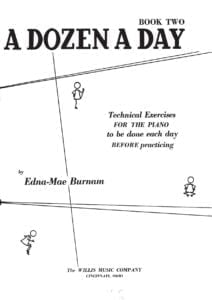 |
|
| A dozen A Day Book 3 Technical exercises for the piano |
 |
|
| A dozen A Day Book 4 Technical exercises for the piano |
 |
|
| A dozen A Day Mini Book Technical exercises for the piano |
 |
|
| A dozen Day Preparatory Book Technical exercises for the piano |
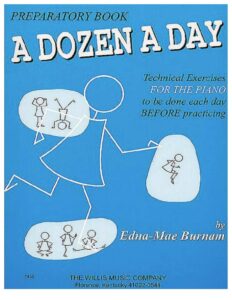 |
|
| A Farewell To Arms Love Theme From A Farewell To Arms film by Mario Nascimbene Francis Webster 1957 |
 |
|
| A Felicidade (Antonio Carlos Jobim) | ||
| A Festival Gathering Of Carols (Musescore File).mscz | ||
| A Fine Frenzy – Almost Lover |
 |
|
| A Fistful of Dollars (Ennio Morricone) | ||
| A Generative Theory Of Tonal Music by Fred Lerdahl and Ray Jackendoff (Book) |
 |
|
| A Guide To Guitar Chords by Curt Sheller |
 |
A Guide To Guitar Chords by Curt Sheller |
| A Guide To Musical Analysis by Nicholas Cook (Book) |
 |
|
| A Handbook Of Piano Playing (By Eric Hope) (1962) |
 |
|
| A Heart Full Of Love (Musescore File).mscz | ||
| A love suicide (Yutaka Minobe) | ||
| A Love Supreme (by Ashley Kahn) The story of john Coltrane’s signature album (Book) |
 |
|
| A Media Luz (Edgardo Donato) | ||
| A Modern Approach To Jazz Rock And Fusion For Guitar with Tablature |
 |
A Modern Approach To Jazz Rock And Fusion For Guitar |
| A Modern Method For Guitar (Berklee) 1 by William Leavitt |
 |
A Modern Method Berklee 1 |
| A Modern Method For Guitar (Berklee) 2 by William Leavitt |
 |
A Modern Method For Guitar (Berklee) 2 |
| A Modern Method For Guitar (Berklee) 3 by William Leavitt |
 |
A Modern Method For Guitar (Berklee) 3 |
| A MOZART REINCARNATED (Ennio Morricone) |
 |
|
| A Mozart Reincarnated by Ennio Morricone (Musescore File).mscz | ||
| A New Approach To Ear Training by Leo Kraft (BOOK) |
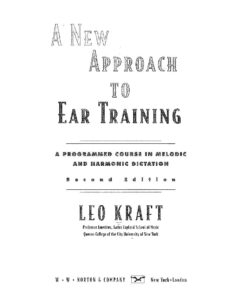 |
|
| A New Approach To Piano Technique (By Ruth A. Dickerson) (1962) |
 |
A new approach to piano technique |
| A Night In Tunisia – Dizzy Gillespie.mscz | ||
| A Pedal Method For The Piano (By Albert F Venino) (1893) |
 |
|
| A Popular Account Of Ancient Musical Instruments And Their Development by William Lynd (Book 1897) |
 |
|
| A Rockin’ Christmas Piano Vocal Guitar |
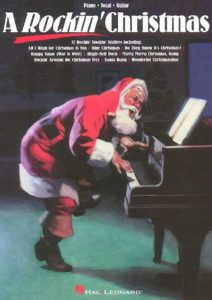 |
A Rockin’ Christmas Piano Vocal Guitar Contents — Rockin Christmas |
| A Single Man – George’s Waltz (Shigeru Umebayashi) | ||
| A Single Man – Stillness of the Mind (Abel Korzeniowski) | ||
| A Smooth Jazz Christmas – Mellow Seasonal Favorites for Piano arr. Roger House |
 |
A Smooth Jazz Christmas – Mellow Seasonal Favorites for Piano arr. Roger House |
| A Song For You – Leon Russell Ray Charles (Musescore File).mscz | ||
| A Star Is Born – Always Remember Us This Way Lady Gaga |
 |
|
| A Star Is Born – Shallow Lady Lady Gaga |
 |
|
| A Tale Of Two Sisters Ost – Epilogue Piano Solo |
 |
|
| A Thousand Years – Twilight OST (Christina Perri) | ||
| A Time For Love – Johnny Mandel |
 |
|
| A Time For Us – Guitar TABlature |
 |
|
| A Time For Us (Love Theme from Romeo and Juliet) Nino Rota |
 |
|
| A Time For Us (Romeo and Juliet OST) Nino Rota | ||
| A Touch Of Jazz 14 well-known hymns, gospel songs and contemporary praise songs by Wolaver Bill |
 |
A Touch Of Jazz 14 well-known hymns, gospel songs and contemporary praise songs by Wolaver Bill |
| A Tribute To Ella Fitzgerald Piano Vocal Guitar |
 |
A tribute to ELLA FITZGERALD |
| A Walk To Remember – Only Hope | ||
| A whiter shade of pale – Procul Harum | A whiter shade of pale – Procul Harum | |
| AaRON U-turn Lili Piano |
 |
|
| Ab Ovo – Joep Beving (Musescore File).mscz | ||
| Abba – Abba Gold – Greatest Hits |
 |
ABBA Gold Geatest Hits booksong sheet music |
| Abba – Chiquitita | ||
| Abba – Dancing Queen | ||
| Abba – Fernando | ||
| Abba – I Have A Dream | ||
| Abba – Like An Angel Passing Through My Room | ||
| Abba – Mamma Mia | ||
| Abba – Slipping Through My Fingers | ||
| Abba – Thank You For The Music | Abba-Thank-You-For-The-Music 1st page | |
| ABBA – Thank You For The Music (Piano Vocal Guitar) | ABBA – Thank You For The Music (Piano Vocal Guitar) | |
| ABBA – Thank You For the Music (Piano vocal Guitar) (Musescore File).mscz | ||
| Abba – Thank You For The Music Piano & vocal | Abba – Thank You For The Music-abba-satb | |
| Abba – The Winner Takes It All | ||
| ABBA Dancing Queen Easy Piano Solo |
 |
|
| ABBA Fernando (Piano Solo arr.) |
 |
|
| ABBA Fernando (Piano Solo arr.).mscz | ||
| ABBA Greatest Hits |
 |
ABBA GREATEST HITS SHEET MUSIC BOOK |
| ABBA I Have A Dream |
 |
|
| Abba The Very Best Vol 1 Easy Piano Hans Gunter Heumann Pop Classics For Piano |
 |
Abba The Very Best Vol 1 Easy Piano |
| Abba The Very Best Vol 2 Easy Piano Hans Gunter Heumann Pop Classics For Piano |
 |
Abba The Very Best Vol 2 Easy Piano |
| Abbey Lincoln Songbook |
 |
Abbey Lincoln Songbook |
| Abbey Lincoln Songbook Piano Vocal Guitar Chords |
 |
Abbey Lincoln Songbook Piano Vocal Guitar Chords |
| Abdullah Ibrahim – The Piano World Of |
 |
Abdullah Ibrahim, The Piano World Of |
| Abdullah Ibrahim The African Piano Of Abdullah Ibrahim Vol 1 |
 |
Abdullah Ibrahim The African Piano Of Abdullah Ibrahim Vol 1 |
| Abdullah Ibrahim The Wedding (piano solo transcription sheet music, partition) |
 |
|
| Abel Korzeniowski – Death Is My Heir (from Romeo and Juliet) |
 |
|
| ABRSM Jazz Piano Pieces Grade 1 to 5 |
 |
ABRSM Jazz Piano Pieces Grade 1 to 5 ABRSM Jazz Piano Pieces Grade 5ABRSM Jazz Piano Pieces Grade 5 |
| ABRSM Piano Exam Pieces Grade 1 (2016) |
 |
ABRSM Piano Exam Pieces Grade 1 (2016) |
| ABRSM Piano Scales, Arpeggios Grade 8 |
 |
|
| ABRSM Piano Scales, Arpeggios and broken chords Grade 1 |
 |
|
| ABRSM Piano Scales, Arpeggios and broken chords Grade 4 |
 |
ABRSM Piano Scales, Arpeggios and broken chords Grade 4 |
| ABRSM Piano Scales, Grade 2 A Guide for Students and Teachers | ABRSM Piano Scales, Grade 2 A Guide for Students and Teachers | |
| ABRSM – Time pieces for guitar vol. 1 |
 |
|
| ABRSM – Time pieces for guitar vol. 2 |
 |
|
| ABRSM 2017 18 Piano Exam Pieces Grade 1 |
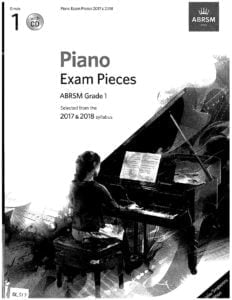 |
ABRSM 2017 18 Piano Exam Pieces Grade 1 |
| ABRSM 2017 18 Piano Exam Pieces Grade 2 |
 |
ABRSM 2017 18 Piano Exam Pieces Grade 2 |
| ABRSM 2017 18 Piano Exam Pieces Grade 3 |
 |
|
| ABRSM 2017 18 Piano Exam Pieces Grade 4 |
 |
|
| ABRSM 2017 18 Piano Exam Pieces Grade 5 |
 |
|
| ABRSM 2017 18 Piano Exam Pieces Grade 6 |
 |
|
| ABRSM 2017 18 Piano Exam Pieces Grade 7 |
 |
|
| ABRSM 2017 18 Piano Exam Pieces Grade 8 |
 |
|
| ABRSM 2021-2022 Piano Exam Pieces Grade 1 |
 |
|
| ABRSM 2021-2022 Piano Exam Pieces Grade 2 |
 |
|
| ABRSM 2021-2022 Piano Exam Pieces Grade 3 |
 |
|
| ABRSM 2021-2022 Piano Exam Pieces Grade 5 |
 |
|
| ABRSM 2021-2022 Piano Exam Pieces Grade 6 |
 |
|
| ABRSM 2021-2022 Piano Exam Pieces Grade 8 |
 |
|
| ABRSM 2021-2022 Piano Exam Pieces Initial Grade |
 |
ABRSM 2021-2022 Piano Exam Pieces Initial Grade |
| ABRSM Aural Training In Practice Book 1 Grades 1 to 3 |
 |
|
| ABRSM Aural Training In Practice Book 2 Grades 4 and 5 |
 |
|
| ABRSM Discovering Music Theory (Complete) Grades 1 to 5 Workbook by Simon Rushby (2020 Exams) |
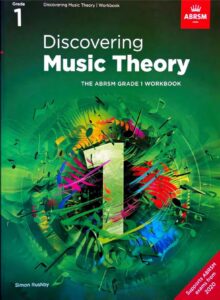 |
ABRSM Discovering Music Theory (Complete) Grades 1 to 5 Workbook by Simon Rushby (2020 Exams) contents |
| ABRSM Erster Verlust Grade 4 ABRSM Piano Exam Pieces 2021 & 2022 |
 |
|
| ABRSM Etude In A Minor – Dmitry Kabalevsky ABRSM Grade 4 Piano Exam Pieces 2021 & 2022 |
 |
|
| ABRSM Grade 2 – Inter-City Stomp byChristopher Norton From Microjazz Collection (Sheet Music) |
 |
|
| ABRSM Initial Grade Piano Exam Pieces 2023 2024 |
 |
|
| ABRSM Minuet and Trio D 41 No 21 – Franz Schubert ABRSM Grade 4 Piano Exam Pieces 2021 & 2022 |
 |
|
| ABRSM More Music Theory Sample Papers Grade 5 For New Format |
 |
|
| ABRSM Music Theory In Practice, Grade 1 (Eric Taylor) |
 |
|
| ABRSM Music Theory In Practice, Grade 2 (Eric Taylor) |
 |
|
| ABRSM Music Theory Past Papers Grade 1 2004 |
 |
|
| ABRSM Music Theory Past Papers Grade 4 2016 |
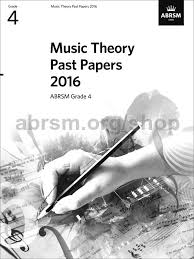 |
|
| ABRSM Music Theory Past Papers Grade 5 2012 |
 |
|
| ABRSM Music Theory Past Papers Grade 6 2013 |
 |
|
| ABRSM Nikki Iles Danny Boy ABRSM Piano Exam Grade 8 2023 Jazz Piano arr. inspired by Bill Evans |
 |
|
| ABRSM Nikki Iles Friends Book 1 Intermediate Jazz Pieces For Piano |
 |
ABRSM Nikki Iles Friends Book 1 Intermediate Jazz Pieces For Piano |
| ABRSM Nikki Iles Friends Book 2 Intermediate To Advanced Jazz Pieces For Piano |
 |
ABRSM Nikki Iles Friends Book 2 Intermediate To Advanced Jazz Pieces For Piano |
| ABRSM Nikki Iles The Elephant Parade ABRSM piano Exam |
 |
|
| ABRSM Piano 2025-2026 Grade 8 C3 A Nightingale Sang in Berkeley Square by Sherwin – Maschwitz |
 |
|
| ABRSM Piano Exam 2007-2008 Grade 3 |
 |
|
| ABRSM Piano Exam 2015-16 Grade 3 |
 |
ABRSM Piano Exam 2015-16 Grade 3 |
